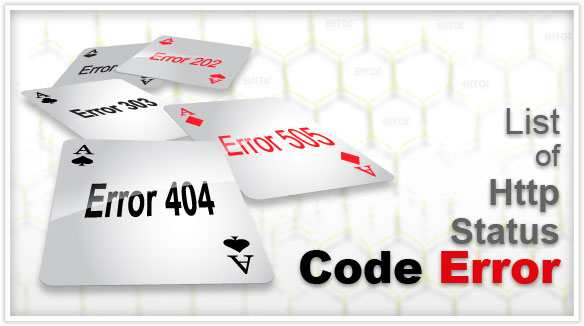
Exapabadble ads with Iframe tags – iframe buster
Home » DARTIframe » Exapabadble ads with Iframe tags – iframe buster

It is context of digital advertising is the method by which certain rich media ads are allowed to expand on a user’s screen, as well as some javascript-based technologies scrape information from the page.
For example, if a publisher wanted to enable an advertiser’s tag to expand from 300×250 to 600×500, and was using an iFrame to load ads asynchronously on their page, they would need to allow the advertiser’s tag to “break” the pre-set dimensions of their iFrame. Technically speaking though, because the rules on which Javascript was built does not allow two iFrames to talk to each other if they are from different domains – for example, a publisher domain and a 3rd party ad server domain – there isn’t a way for the 3rd party ad tag to tell the publisher’s page that it needs to serve an image larger than that of the iFrame.
So to address this problem, rich media vendors ask that publisher place a file in the publisher ad server’s subdomain. This file doesn’t really have a name in the ad tech world, some just call it a publisher file, others call it a bridge or gateway file, but all rich media companies have it. This file’s location must be known to the rich media vendor, and then what happens is when a rich media tag loads into that publisher’s iFrame, it quickly looks up that file (some javascript), sends some various parameters (things like the unique identifier for the ad that needs to serve) to the that file, which then makes another request to the rich media vendor. Basically, the 3rd party ad tag redirects itself through the publisher file so that the request appears to come from the publisher’s domain, because the javascript is hosted on the publisher’s domain. That solves the problem of allowing the iFrame to talk to the publisher’s page, and the iFrame is thereby allowed to expand.
Pointroll has a good explanation on their side, and an example file you can actually look at:https://wiki.pointroll.com/display/PRRC/iFrame+Delivery+Specs
Other technologies that want to bust iFrames are technologies like ad verification, which want to know the URL of the page they are serving on so they can report it back to an advertiser.A single or even two nested iFrames can be busted by various clever javascript coding to scrape information from the page,
Credits :Ben
Related Articles
-
What is safe Frame or Safe Frame Container ?
-0
What is safe Frame ? SafeFrame’s open line of communication between webpage code and the ad content has several...
-
Cache buster and Click macros
-0
What is Ad tag macros? What are the types? In order to know how many impression or clicks are...
-
Every Ad trafficker should have-Tools For Advertising QA Testing
-1
1.Snagit Image and Video Screen Capture Sometimes words aren’t enough. Use images and videos to show people exactly what you’re seeing. Snagit gives...
-
HTTP Status Codes and Errors
-0
3. HTTP Status Codes and Errors An HTTP request can fail because of a network error or because of...
-
Video Ad Macros Insertion Guide -Ad Tag Macros
-0
Ad servers, measurement partners, and buyers seek access to additional data from publishers to enhance their understanding of the...
-
Everything About Rubicon Project
-0
Rubicon Project is a leading technology company automating the buying and selling of advertising. Relentless in its efforts for...
Advertisement
Recent Post
-
 4 Cele mai bune site-uri de jocuri să norocire Roblox pe 2025: Verificați lista site-urilor ş Excelbet cazinou online tu December 7, 2025
4 Cele mai bune site-uri de jocuri să norocire Roblox pe 2025: Verificați lista site-urilor ş Excelbet cazinou online tu December 7, 2025
-
 Book of Ra Gratuitamente Slot di Book of Ra sopra prassi Demo In assenza di Scaricare December 7, 2025
Book of Ra Gratuitamente Slot di Book of Ra sopra prassi Demo In assenza di Scaricare December 7, 2025
-
 Migliori gratifica HiBet casa da gioco online: vertice offerte di commiato di maggio December 7, 2025
Migliori gratifica HiBet casa da gioco online: vertice offerte di commiato di maggio December 7, 2025
-
 Tragamonedas De balde falto soltar +2000 Superiores Máquinas Tragaperras desprovisto tanque December 7, 2025
Tragamonedas De balde falto soltar +2000 Superiores Máquinas Tragaperras desprovisto tanque December 7, 2025
-
 “Exactly what the Houthis Want” Archives December 7, 2025
“Exactly what the Houthis Want” Archives December 7, 2025
-
 The new Day Label of balmy bingo Allentown, Pennsylvania December 7, 2025
The new Day Label of balmy bingo Allentown, Pennsylvania December 7, 2025
-
 Jocuri 24Bettle Cam Aparate Immortal Romance Gurus Digital Arcad Romania December 7, 2025
Jocuri 24Bettle Cam Aparate Immortal Romance Gurus Digital Arcad Romania December 7, 2025
-
 Space Wars Fietsslot Play 96 75% RTP, 1000 xBet Max Buikwind December 7, 2025
Space Wars Fietsslot Play 96 75% RTP, 1000 xBet Max Buikwind December 7, 2025
-
 50 Noppes Spins Buiten Betaling september Spinybet 2025 December 7, 2025
50 Noppes Spins Buiten Betaling september Spinybet 2025 December 7, 2025
-
 Book of Ra Classic & more Slot Machine A scrocco ancora In Ricchezza Competente December 7, 2025
Book of Ra Classic & more Slot Machine A scrocco ancora In Ricchezza Competente December 7, 2025
Advertisement
-
4 Cele mai bune site-uri de jocuri să norocire Roblox pe 2025: Verificați lista site-urilor ş Excelbet cazinou online tu December 7, 2025
-
Book of Ra Gratuitamente Slot di Book of Ra sopra prassi Demo In assenza di Scaricare December 7, 2025
-
Migliori gratifica HiBet casa da gioco online: vertice offerte di commiato di maggio December 7, 2025
-
Tragamonedas De balde falto soltar +2000 Superiores Máquinas Tragaperras desprovisto tanque December 7, 2025
-
“Exactly what the Houthis Want” Archives December 7, 2025






